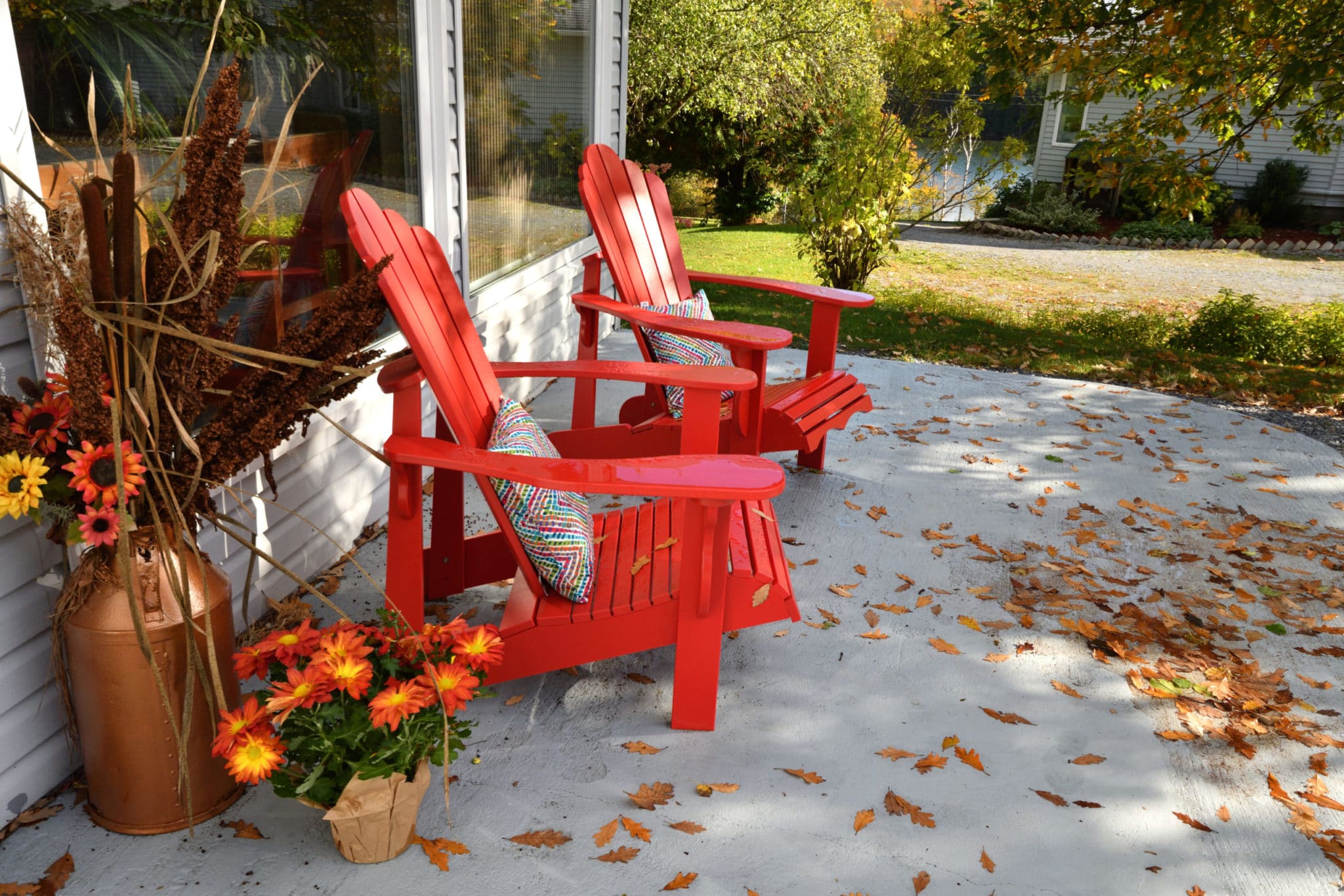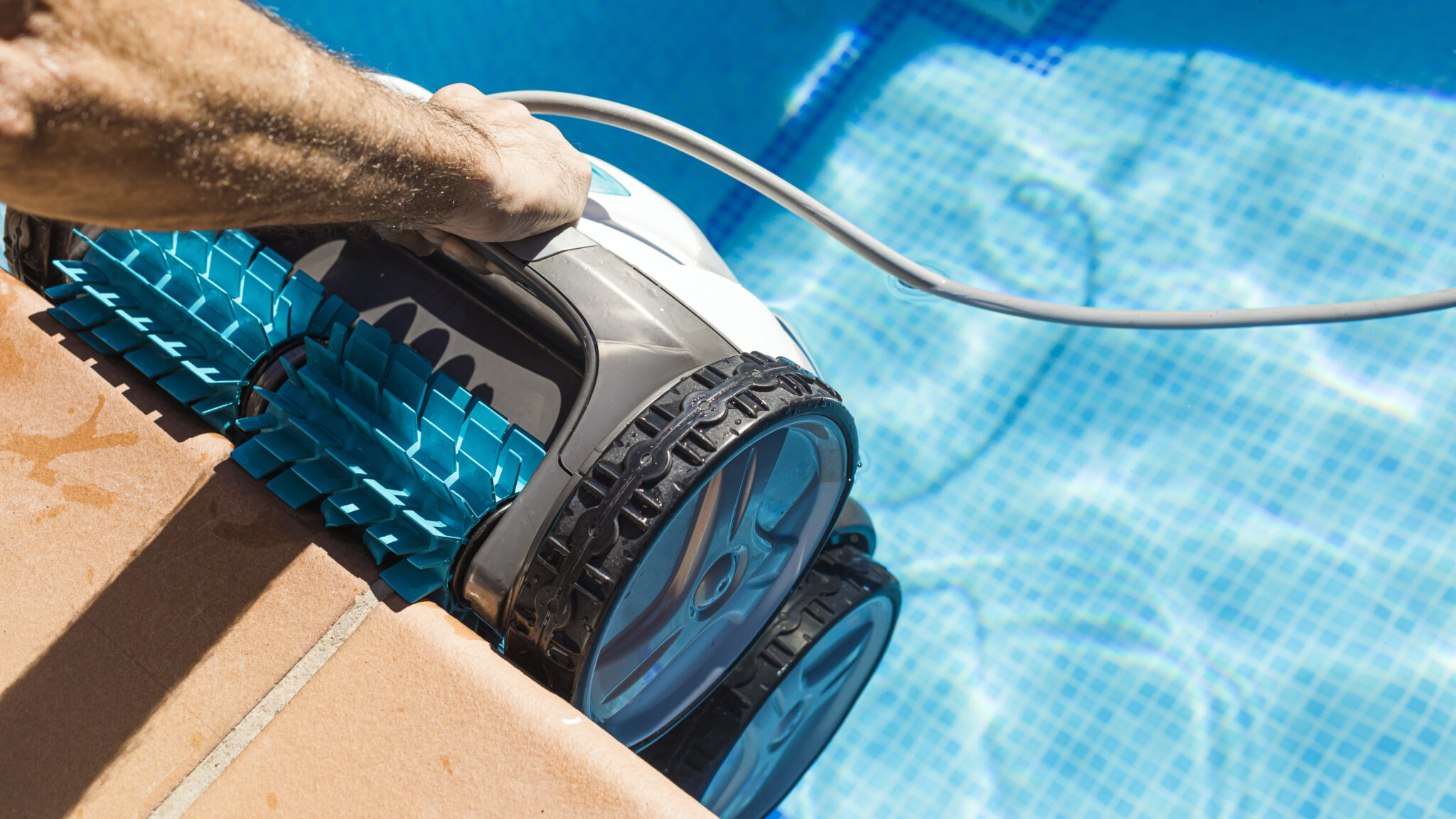In many parts of the country, it’s still nice enough to spend time outdoors, but cold and wet enough to worry about how to weatherproof your outdoor furniture for fall.
Maybe you use the same outdoor furniture year-round or swap it out for something more appropriate for the season. Whatever your method, here’s what you need to know about how to weatherproof outdoor furniture for the colder months.
Keep Your Outdoor Furniture Covered as Much as Possible
There are two main ways to cover your furniture outdoors:
- With built-in features of your home, such as a covered porch or patio
- Using weatherproof furniture covers
If you have the option, of set up your furniture under an awning or overhang. A permanent cover will help protect your furniture from the worst of the elements. If you don’t already have a space that will work, consider investing in a covered carport, canopy, or pop-up gazebo.
A roof won’t protect your furniture from all of the elements, though. In heavy wind or rain, outdoor furniture may still get wet or damaged. This is why it’s a good idea to have waterproof covers on hand that you can throw over your furniture when you’re expecting especially bad weather.
Use Furniture Glides to Protect Furniture Feet
The undersides of your furniture can be susceptible to water, too. This is especially true if they’re in a space where rain can collect on the ground. Furniture glides or furniture feet are a good way to prevent rain from damaging the legs of wood or metal furniture.
There are dozens of different types to choose from, including caps and inserts that fit on or inside the feet. You can also install saddle glides that fit around tubular legs.
These protectors can also keep outdoor surfaces, such as your deck or patio, safe from damage when you move your furniture around.
Clean Your Furniture Regularly to Avoid Weather Damage
Water isn’t the only thing you have to protect your furniture from. Leaves, dirt, and other debris can all contribute to other kinds of outdoor furniture damage like:
- Mildew
- Discoloration
- Rust
- Warping
Knowing the right cleaning products to use on each type of furniture is key.
For plastic, wicker, and metal, you can simply use warm water and dish soap to clean your outdoor furniture. Just avoid scrubbing too hard or using a power washer when you’re washing your furniture. But if your metal furniture is starting to rust, you may need to break out the steel wool to remove it.
For wood furniture, you’ll need to pay closer attention to the type of wood and coating, and avoid scrubbing against the grain of softer woods like cedar.
And don’t wait for your outdoor furniture to show major damage signs before you decide to clean or weatherproof. Regular cleanings once a quarter (or more regularly if needed) will go a long way to maintaining your furniture year round.
Use the Right Coat or Treatment for Each Material
Another way to weatherproof your outdoor furniture is by coating or treating it. You can use waterproof sealant or paint on wood furniture. This doesn’t just protect it from rain, it also prevents warping due to moisture and decay from UV radiation.
Hardwood furniture can benefit from sanding and finishing on a yearly basis. For metal furniture, consider wax coatings for protection.
Always clean your furniture before applying a treatment. This is because you want to be sure to remove mildew, rust, and corrosion to avoid trapping it under the coating or paint.
Don’t Postpone Necessary Repairs
While waiting until winter is over to repair or weatherproof your outdoor furniture may seem like a good idea, it’s best to take care of any repairs before the weather changes. This is because rust, rot, and mildew are only going to get worse over the winter. Minor issues now can turn into major issues later if not addressed.
Don’t forget to take stock of any accessories, such as your outdoor grill, umbrella, and cushions, and make a plan for washing and repairing them, too, if necessary.
When in Doubt, Store Your Furniture for the Winter
Finally, not all furniture is built to withstand all the seasons. This is why it’s important to do some research before you buy outdoor furniture. You need to think about what materials work best in your local climate and come up with a storage plan.
But in some cases no matter what you choose, you’ll always be better off bringing your furniture indoors or storing it over the winter. You can purchase a deck box to store your pillows and cushions, or set up a backyard storage shed to store folding or stackable furniture.
For larger items that are harder to move, use weatherproof covers to zip them up and protect them from rain, snow, dirt, and critters. If you can use your patio furniture indoors, bring them inside for the off-season. Plastic furniture in particular can get brittle in cold weather, so bring them into the garage or basement to increase its lifespan.
With these tips, you’ll be able to weatherproof your furniture for the fall, and enjoy your outdoor furniture for years to come!






